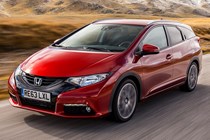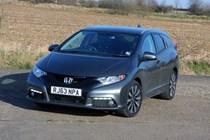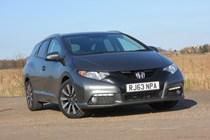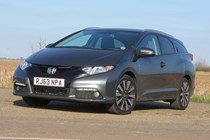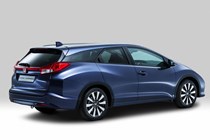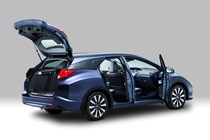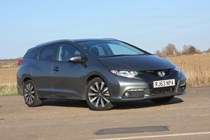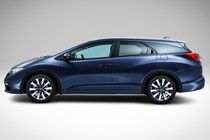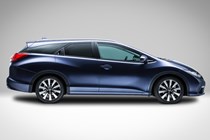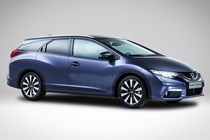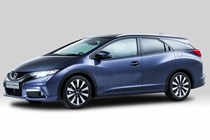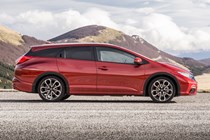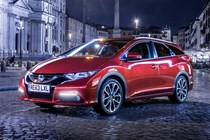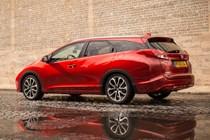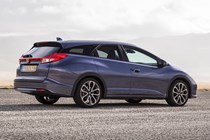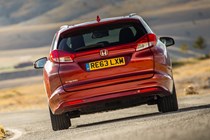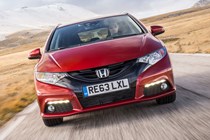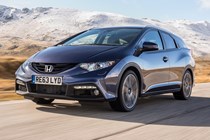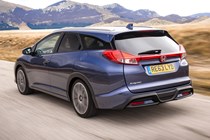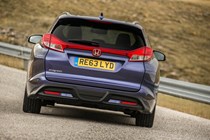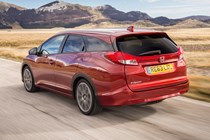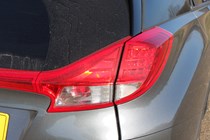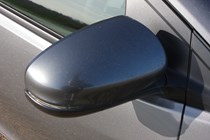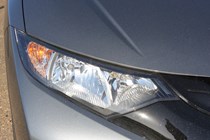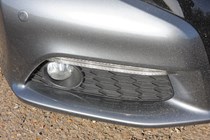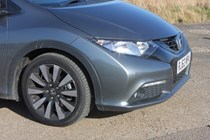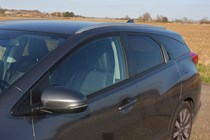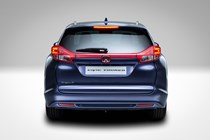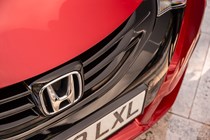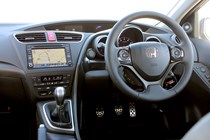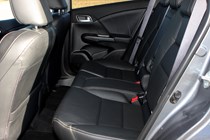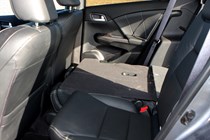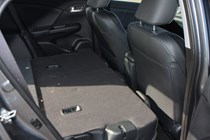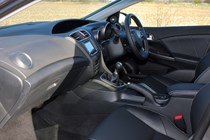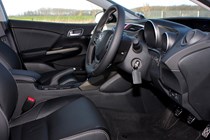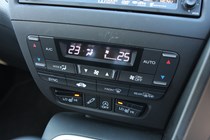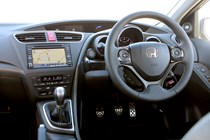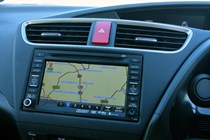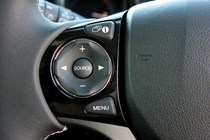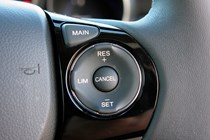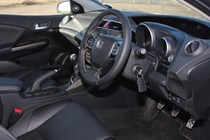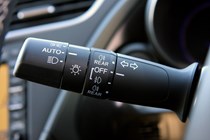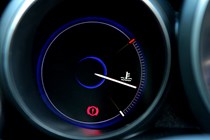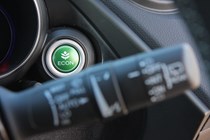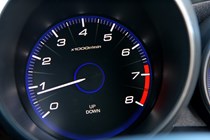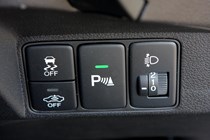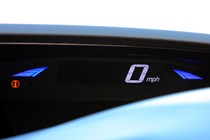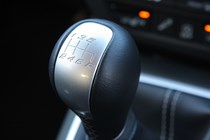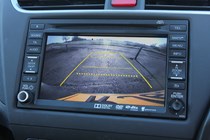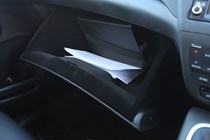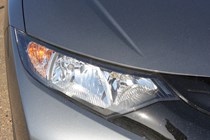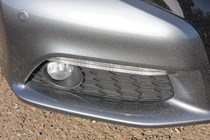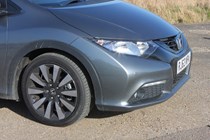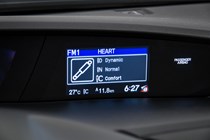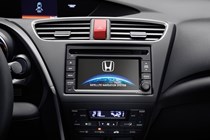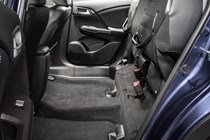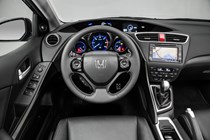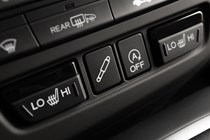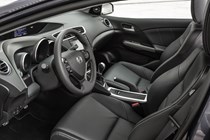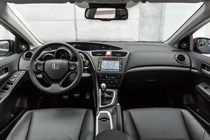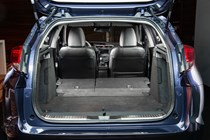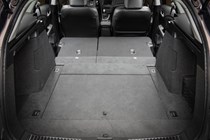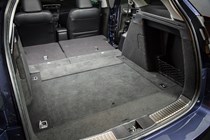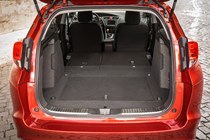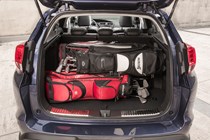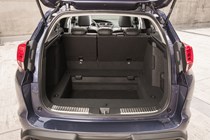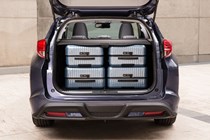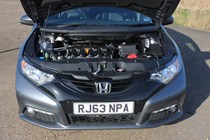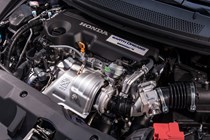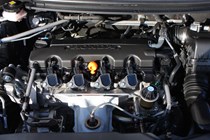
Honda Civic Tourer (2014-2018) engines, drive and performance
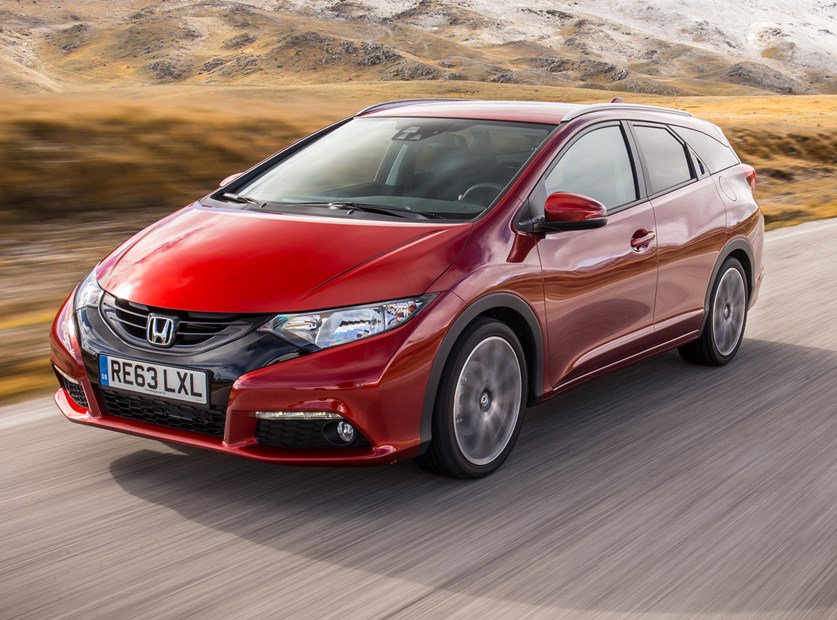
There are two engines available from launch – one petrol and one diesel.
Petrol engine
The best Honda Civic Tourer performance figures belong to the 1.8-litre i-VTEC petrol version with 140bhp, getting from 0-62mph in 9.2 seconds and on to a top speed of 130mph.
It’s available either with Honda’s excellent six-speed manual gearbox or a five-speed automatic transmission.
Diesel engine
Although the 1.6-litre i-DTEC diesel engine has less power than the petrol at 118bhp, there’s more torque (300Nm versus 174Nm) which means it pulls more strongly and is therefore better suited to activities such as towing, for example.
It offers excellent fuel economy and CO2 emissions, more on which can be discovered in the ‘Running costs’ section of this review. It’s just a shame it’s so noisy, sounding thrashy at high revs and settling into a constant drone on the motorway. It’s no deal-breaker, though.
The diesel option is available only with a six-speed manual gearbox. That’s no bad thing as it’s a slick, user-friendly transmission with a pleasantly snappy, short-throw action.
Honda is not currently planning to offer the Civic Tourer with the larger 2.2-litre diesel engine available for the hatch, which isn’t a problem as the 1.6 is a flexible engine that offers a good level of performance for everyday driving.
It’s not the most exciting car in the world to drive, but the Honda Civic Tourer is safe and stable at both high and low speeds with excellent body control.
At launch we drove the car fitted with the adaptive rear dampers standard on the top two trim levels. They calculate body movement, vehicle speed, steering input and a host of other parameters constantly via the car’s main computer system and react accordingly to offer the best stability and ride comfort.
They operate on the rear axle only; partly to reduce the costs that would result from fitting them to all four wheels and partly because one of their primary purposes is to counteract the effect of heavy loads the Tourer’s boot may be filled with.
Controlled via a toggle switch just ahead of the gear lever, there are three modes – Dynamic, Normal and Comfort. The system reacts instantaneously and each mode does feel quite markedly different. Dynamic, the firmest setting, reduces body roll noticeably while Comfort, the softest, means bumps and potholes make their presence felt a great deal less.
Normal mode offers a good compromise between the two and was the setting we found ourselves using for the majority of the time. Whichever setting the Tourer is in, it deals with bumps and undulations very well, remaining stable at all times.
Like the hatchback, which has had its power steering system retuned for 2014, the Tourer’s steering has been engineered for a more solid feel and linear response. Despite that, it’s still a little numb in feel though it is pleasingly accurate.


